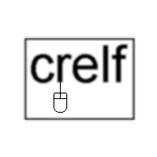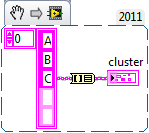-
Posts
5,759 -
Joined
-
Last visited
-
Days Won
55
Content Type
Profiles
Forums
Downloads
Gallery
Posts posted by crelf
-
-
This website wants to teach the world to code...
Learning with your friends - that's a neat concept!
-
Here's an existing colleciton of CRC functions: http://forums.ni.com/t5/LabVIEW/Checksum-calculation/td-p/86249
-
 1
1
-
-
-
The continued successes and growth of LAVA and the community it supports is based soley on our members - so all our thanks go to you guys! Thanks to everyone who got involved in 2011
 Here's looking to an even better 2012!
Here's looking to an even better 2012! -
I can't seem to work out why you're using rendezvous at all in this example - you want both loops to start at about the same time, but, other then the dataflow forced by the rendezvous wire, you're not using rendezvous here at all...
-
 1
1
-
-
You could use the following code to set all cells of mclb to the same format.
Ugh - I'd totally forgotten about that! Thanks Olivier

-
These controls (trees, mlcb) seem to be implemented such that once you've applied formatting to cells, the control remembers that formatting data for every cell regardless of whether that cell has data in it. I'm not arguing this shouldn't be the case, but it becomes troublesome since there seems to be no means to clear the formatting data.
Also true - I have a job I just delvered where I color cells based on OK/Suspect data - then, when new measurements come in, I can't assume the dataset is the same size, so I have to color an arbitrary number of cells white first, then color the OK/Suspect cells - I agree that there needs to be a method to clear formatting.
-
you need to pass the class data out of the LabVIEW action step to a TestStand variable (of data type Object Reference) and then pass it as an input param to the next LabVIEW step that needs the class data however I am not sure if that is available to you using TestStand 4.2, not sure if TestStand 4.2 allows LabVIEW classes to be passed as an object ref.
You're absolutely right - TestStand 4.2 doesn't support the LVOOP object, so the best bet to to flatten it to a string and pass it around in TestStand as a binary string <- note the emphasis, as passing it around as an ASCII string will corrupt it.
TestStand 2010 supports the LVOOP object, but does not support dynamic dispatch.
-
...the UI bogs down for minutes at that point, even with UI updates being deferred etc.
Even with UI updates being deferred? I can't decide if that's possibly a bug or should be changed via a feature request...
-
Another reason this could happen (for future reference) is if polymorphic VIs have different icon instances.
-
Here are the VIs we use for Windows authentication and domain groups.
Nice work Pat.
-
I want to develop an application in which user can create drawing (Electrical Network)at runtime user can pick controls like line, transformers, bus, PT, etc. electrical objects through tool box and place them on working area (drawing area) and save this drawing for further use. In future this drawing is connected with SCADA.
Sounds like you want something like National Instruments Lookout. I've used it on a few jobs that are very similar to yours and it worked great.
-
For future reference, posting something like this at http://forums.ni.com/ is more effective than posting it on LAVA.
That may be so, but anyone's welcome to post about what they think are possible bugs here - so we can all discuss it, and maybe flesh it out more before it's reported.
-
I'd post code, but it's part of our internal reuse library, so I won't. That said, here's a summary of what you can tyr:
To get a member's groups, call a command prompt with
net group /domain
Then look at the text between the "----------" and the "The command completed successfully". Then iterate over the groups with a command prompt
net user /domain "%s"
for the groups the member belongs to.
Note: you could get the user list first, then loop over them to get groups, but that is *much* slower, depending on how many domain controllers there are, and how geographically distributed they are.
-
I know that S.E.A. sell a GPS c series module, but it is only compatible with cRIO, not cDAQ, obviously with the different interfaces.
Like you said, cRIO yes, cDAQ no. I've never used them, but I hear the S.E.A. modules are quite good - and they've been around for a long time (well, in cRIO terms).
-
Let's get some LAVA peeps representing!
-
Much more difficult than using a pic as a serial pass-through to just chop the break

I'm just sayin' - maybe the system already has an FPGA in there with a few spare gates

-
Right - or implement your own in FPGA, which wouldn't be too difficult...
-
So I've run into a VIPM vipc issue a few times, and I want to get everyone's opinion - maybe I'm missing something? Please take a look at this idea on the JKI Idea Exchange and add comments over there.
-
 1
1
-
-
I start with an array of N strings. Using the function "Array to Cluster" I get a cluster of 1-element arrays (each containing one string) when what I want is a cluster of N strings.There is an Array to Cluster in the Cluster palette. You must specify the size of the cluster to make (the default is 9), right click the primitive and select Cluster Size. This is not changeable at runtime as far as I know.Paradon, but you clearly did NOT read my question. Setting cluster size is NOT a problem. I already do that. But from an ARRAY_OF_STRINGS it gives me a CLUSTER of 1-STRING_ARRAYS. And that will not do. I need a CLUSTER_OF_STRINGS from an ARRAY_OF_STRINGS.
Before you get too snippy, I think the reason hoovahh replied the way he did is because your original post doesn't make sense: if you use the "Array to Cluster" with a 1D array of strings then the output is a cluster of strings, not a cluster of 1D arrays of strings with one element each like you suggest.
Drag this snippet onto an empty LabVIEW block diagram and you'll see that it works as expected:
My guess is that you're either not using "Array to Cluster" correclty (although I can't imagine how you can use it incorrectly), or your input isn't a 1D array of strings, as you've suggested. Post a code snippet of your issue and we'll try to help.
-
Woot! Congrats

-
Your intial post isn't clear on whether you are working on the class in the project explorer, or just opening the ctl somehow on disk? Is it the lvclass or a ctl that's used by the lvclass?
-
Do you need to execute, read, execute, read, etc, or can you run a bunch of commands in a batch file and then read the output when it completes?
-
The question becomes defining what "readable" means. In these cases, I tend to think that the software can read it, so that's one level or readability, and I can read it to a certain level, so that's another level of readability. Does your average user need to dive into the xml? Hopefully not - your software should be what's taking care of the data (who knows what a user can do to it), and if you do need the user to modify the data in an xml file, then provide a file editor that protects the stuff they shouldn't play with, and only exposes encapsulated access to the things they should.
I know it doesn't answer your question, but I think your question might lead to others in the application of your architecture.
-
 2
2
-





An opportunity to give something back to LabVIEW
in LAVA Lounge
Posted
We all love using LabVIEW, but here's a new year opportunity to help give something back: http://labviewjournal.com/2011/12/help-with-labview-research-project/ All they want is a little code and a few minutes of your time.